MTUG: an Instrumented Timed Up and Go Extended Test.
|
If you are the presenter of this abstract (or if you cite this abstract in a talk or on a poster), please show the QR code in your slide or poster (QR code contains this URL). |
Abstract
Background
The aim of this study was to, using the inertial sensor found in the iPhone4®, locate in the ten meter Extended Timed Get Up and Go test the series of kinematic variables deriving from accelerometry and from angular velocity and displacement which show the greatest level of precision in order to discriminate between two groups of elderly persons (frail and physically active) compared to the traditionally used variable, namely time.
Methods
This study used the transversal analytical approach in an attempt to locate the series of kinematic variables which showed the highest degree of precision in order to discriminate between two groups. Firstly, the differences between the two groups (frail elderly persons and healthy elderly persons) were analyzed using variance analysis. The statistical significance level was established at p<0.05. Secondly, Receiver Operating Characteristic (ROC) curves were drawn up in order to evaluate the level of precision in the predictive capability of the kinematic variables compared to the traditionally used variable, namely time.
Results
In phases Si-St and T-St-Si, the results indicate that the variables for acceleration showed greater sensitivity in terms of discriminating between the population groups in the study than the angular velocity and displacement data; specifically, they were the minimum acceleration variables in motion axes x, z and y. In sub-phases GG and GC, accelerations in the x axis showed greater discrimination sensitivity between the frail and the controls. For the turning phase, the minimum acceleration variables which obtained area values below the curve greater than for time were the accelerations in the z and y axes.
Conclusions
The readings deriving from acceleration and angular velocity and displacement during the ETGUG test present a higher degree of precision in discrimination capability between a group of frail and a group of physically active elderly persons, in a more sensitive manner than the variable traditionally used in this test, namely time.
The aim of this study was to, using the inertial sensor found in the iPhone4®, locate in the ten meter Extended Timed Get Up and Go test the series of kinematic variables deriving from accelerometry and from angular velocity and displacement which show the greatest level of precision in order to discriminate between two groups of elderly persons (frail and physically active) compared to the traditionally used variable, namely time.
Methods
This study used the transversal analytical approach in an attempt to locate the series of kinematic variables which showed the highest degree of precision in order to discriminate between two groups. Firstly, the differences between the two groups (frail elderly persons and healthy elderly persons) were analyzed using variance analysis. The statistical significance level was established at p<0.05. Secondly, Receiver Operating Characteristic (ROC) curves were drawn up in order to evaluate the level of precision in the predictive capability of the kinematic variables compared to the traditionally used variable, namely time.
Results
In phases Si-St and T-St-Si, the results indicate that the variables for acceleration showed greater sensitivity in terms of discriminating between the population groups in the study than the angular velocity and displacement data; specifically, they were the minimum acceleration variables in motion axes x, z and y. In sub-phases GG and GC, accelerations in the x axis showed greater discrimination sensitivity between the frail and the controls. For the turning phase, the minimum acceleration variables which obtained area values below the curve greater than for time were the accelerations in the z and y axes.
Conclusions
The readings deriving from acceleration and angular velocity and displacement during the ETGUG test present a higher degree of precision in discrimination capability between a group of frail and a group of physically active elderly persons, in a more sensitive manner than the variable traditionally used in this test, namely time.
Medicine 2.0® is happy to support and promote other conferences and workshops in this area. Contact us to produce, disseminate and promote your conference or workshop under this label and in this event series. In addition, we are always looking for hosts of future World Congresses. Medicine 2.0® is a registered trademark of JMIR Publications Inc., the leading academic ehealth publisher.

This work is licensed under a Creative Commons Attribution 3.0 License.




